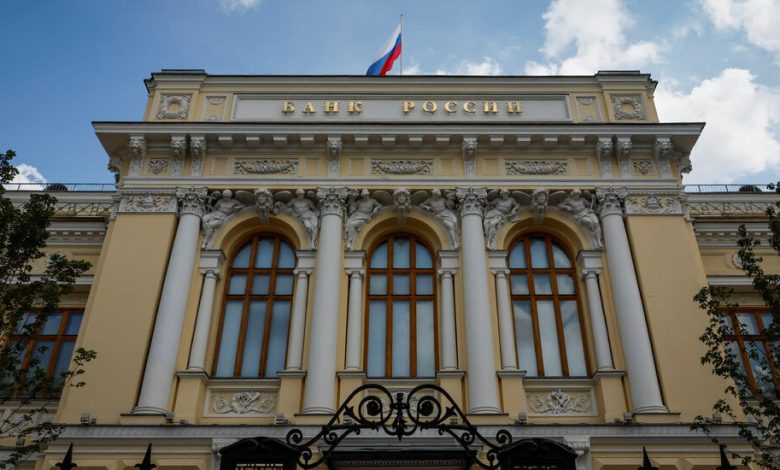Russian Ruble Briefly Weakens to 100 Against U.S. Dollar

The Russian ruble briefly weakened to a symbolically important exchange rate of 100 to the dollar on Tuesday for the first time since mid-August, when worries about wartime shocks to the economy led the central bank to call an emergency meeting at which it sharply raised interest rates to 12 percent.
The dip also came two and a half weeks after the central bank announced that it would raise the benchmark interest rate again, to 13 percent, in response to higher inflation that the bank said was driven by demand outpacing production capabilities. Higher interest rates make it relatively more attractive to hold ruble-denominated assets.
Since mid-August, the ruble has hovered around 95 to 99 rubles to a dollar, significantly weaker since the start of the year, in a sign of the financial volatility unleashed by President Vladimir V. Putin’s war against Ukraine. High military spending, labor shortages and a steadily worsening trade balance have led to concerns about a weakening economy and the sustainability of Moscow’s intense spending on the war.
When it raised rates in September, the central bank blamed the ruble’s decline on various “external restrictions” on trade with Russia that have raised the cost of imports and weakened demand for Russian exports.
Since Russia invaded Ukraine in February of last year, the ruble has experienced a series of ups and downs, weakening to 135 per dollar in March 2022 as the economy suffered from an onslaught of Western sanctions and an exodus of capital and assets. Later in 2022, the ruble recovered, after a spike in oil prices and falling imports.
But it slumped again in August, losing about 25 percent of its value versus the dollar from the beginning of the year. In response, the central bank called an emergency meeting and aggressively raised the benchmark interest rate.
The Kremlin’s spokesman, Dmitry Peskov, said that the ruble’s slip on Tuesday against the dollar was not a reason for worry. “We have to get used to living in the ruble zone and not feel dependent on the dollar,” he said, calling such concerns “rudiments of the past.”
In a meeting to discuss the federal budget last month, Mr. Putin said the country’s “current economic situation is generally stable and balanced” and that he expects gross domestic product to grow by 2.5 to 2.8 percent in 2023, according to news reports. The central bank’s latest prognosis for growth was more conservative, between 1.5 and 2.5 percent for the year.



